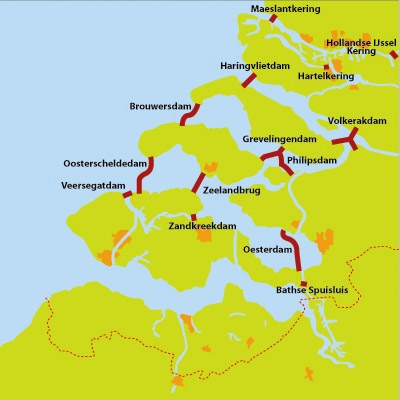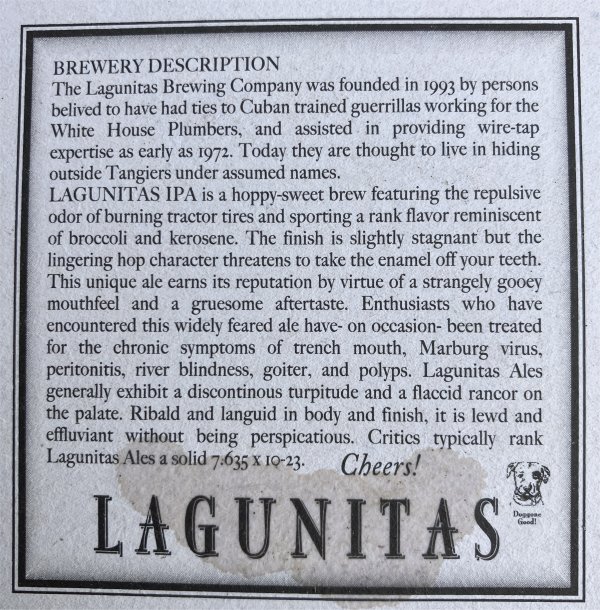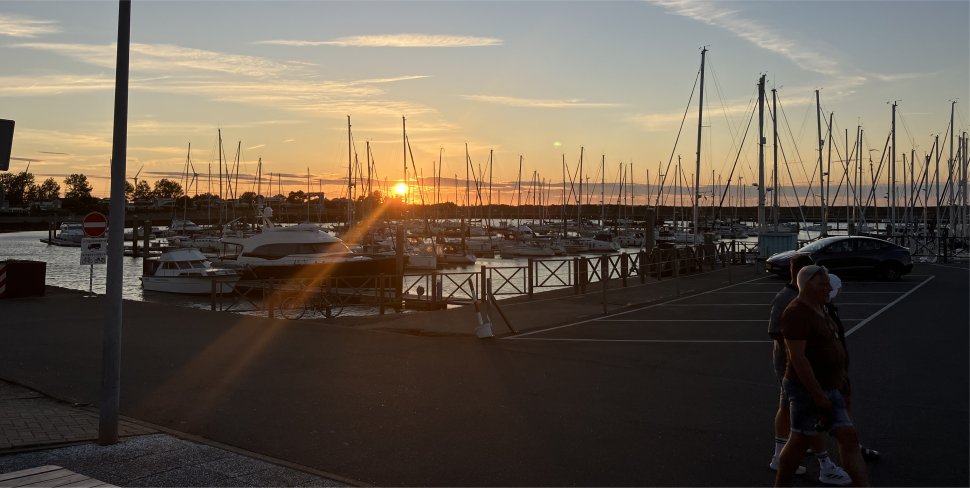Poor Rex had been ill during the night and was still jaded in the morning. Nevertheless he was still keen for us to depart Zierikzee for the Roompot by 10am. The combination of wind and tide made it difficult to extract ourselves out of the box, but we managed and headed down Havenkanaal towards the Oosterschelde. Soon, five other vessels were chasing us down, keen to overtake us and prove their manhood by reaching the Oosterschelde first. We glowed with pride when we beat them to it.
The water was decidedly choppy as we changed course to the west towards the Roompot. Despite the wind and lumpy seas it was a straightforward trip with no undue hinderances from other vessels; perhaps many preferred to stay in port.
 Oosterscheldedam |
 The Delta in 1580 from Zelandicarum by Jacob van Deventer |
Studies conducted in 1937 by the Department of Public Works showed that safety in many parts of the Netherlands could not be guaranteed at times of storms and high sea levels. In the densely populated areas near the river mouths of the Rhine, Maas, and Schelde, it proved very difficult to build new dykes or strengthen the original ones. The first solution was to close all the river mouths: the Westerschelde, the Oosterschelde, the Haringvliet, and the Brouwershavense Gat. This proposal was christened "the Deltaplan". In 1950, the first river mouths of the Brieles' Gat and the Botlek were closed. The Brielse Maas became a freshwater basin. This not only made the area safer, but it also provided Voorne with a freshwater supply. The plan was to build the remaining dams in the following decades. Unfortunately though, the infamous flood of 1953 prevented this from happening. Nearly two thousand people died and more than 150,000 hectares of land were flooded. People soon became aware that something had to be done, and very, very quickly.
Twenty days after the flood of 1953, the Delta commission was inaugurated. The commission would give advice about the execution of the Deltaplan, which would, in the long run, increase the safety of the Delta area. Although safety was the number one priority, the seaways De Nieuwe Waterweg and the Westerschelde would have to stay open, because of the economic importance of the ports of Rotterdam and Antwerp. In order to be able to build dams in the rivers' mouths, some auxiliary dams would first have to be built in the Zandkreek, the Krammer, the Grevelingen, and the Volkerak. These dams were known as "compartment dams", since they would divide the large area of water into multiple compartments. In 1959, the Delta Law was passed, in order to organise the construction of the dams. The building of the "Delta Works" was such an enormous project, that it was sometimes referred to as the "eighth wonder of the world" - and not without good reason.
 The Deltaworks Today |
An enormous array of sluices was built in the mouth of the Haringvliet in order to drain off excess water from the river Rhine. The sluices are able to be opened during very cold winters, to prevent the tide from freezing. This could be necessary to prevent the freezing of the large Dutch rivers. It was therefore, only in emergency situations, that salt water from the North Sea would be allowed to enter the freshwater Haringvliet. After the construction of the Haringvliet dam, the Haringvliet gradually became fresh. By 1971, the seventeen sixty-metres-wide sluices were fully operational. The Brouwers dam, south of the Haringvliet dam, was finished almost a year later.
According to the original plans, the Oosterschelde would be closed, just like the other river mouths. The water enclosed behind the dam would therefore become fresh, exactly like the water in the Haringvliet and the Lake of Veere. There was some unexpected resistance against the construction of a closed dam, because people were concerned that the unique salt water environment of the Oosterschelde would cease to exist. Specifically, not only the environment, but also the fishing industry would suffer from a dam. One possibility was to keep the Oosterschelde open and to systematically raise the 150 kms of dykes around the Oosterschelde. In 1976, the Dutch government agreed to an alternative plan: instead of building a closed dam, an open barrier would be built, containing a number of sluices that would only be closed during heavy storms and high-water levels. Thus the unique freshwater environment and the favourable fishery conditions would be maintained. Sixty-two openings, each forty metres wide, would be installed to allow as much salt water through as possible. It was supposed to maintain the tidal movement. The Oosterschelde storm surge barrier turned out to be one of the biggest structures of the world. The costs of an "open dam" were considerable higher than the costs of an ordinary closed dam: 2.5 billion euros were needed to complete the barrier. On October 4th, 1986, the Dutch Queen Beatrix officially opened the Oosterschelde storm surge barrier.
Besides shortening the total length of the dykes by 700 kms, the Deltaworks had many other advantages. Firstly, the agricultural freshwater supply was improved. Because the border between freshwater and saltwater was moved further west, less freshwater was required to balance the freshwater-saltwater division. The excess water could be transported to the north of the Netherlands, in the direction of the Ijsselmeer, where extra freshwater was welcomed to improve the water conditions.
Secondly, the complete water balance of the Delta area was improved. Thanks to the construction of the major and auxiliary dams, the streams in this area were able to be manipulated more easily. Different types of sluices made it possible to allow fresh water in, or polluted or excess water out.
Thirdly, the construction of the Deltaworks encouraged traffic between the many islands and peninsulas. Large parts of the province of Zeeland had literally been isolated for centuries. The building of the Zeeland Bridge together with a tunnel under the Westerscheldetunnel (2003), also helped increase mobility.
Fourthly, the inland waterways shipping was supported by the Deltaworks. In 1976, Belgium and the Netherlands signed a contract that would regulate the shipping between the ports of Antwerp and Rotterdam. Obviously, this agreement had to be taken into account when building the Deltaworks.
Lastly, the Deltaworks have influenced new developments in the areas of nature and recreation. Understandably, a number of nature reserves were irreparably damaged, but as compensation, new nature reserves had emerged at different sites. Nowadays, dry shores are sometimes used as recreational areas. Whether or not nature has benefited from the Deltaworks will remain an unsolved debate. However, there is no doubt over the need for durable water management, in which safety, prosperity, and nature are taken into account.
In addition to the construction of new dams and barriers, at several places, existing dams had to be heightened. This was especially the fact in the western parts of the islands (Walcheren, Schouwen, Goerree) and along the waterway of Rotterdam and the Western Schelde. The dykes needed reinforcement because they were not directly protected by the large works. It was a common misconception that the Deltaworks were only built to replace dykes. In most of the cases, building a Deltawork was much quicker, and cheaper than reinforcing existing dykes. Since the building and strengthening of dykes are time consuming and expensive, another Deltawork was built to the west of Maassluis at the end of the 20th century. The movable barrier, called the "Maeslant Barrier", can close off the New Waterway when water levels are threatening the dykes in the environment. Due to the recent climate change and the rise in sea-level, high-water levels are more likely to occur near the coasts of Zeeland and Holland. The number of people that live in the polders, several metres below sea level, had actually increased since the flood of 1953. The chance now to have another flood had decreased from once per 80 years to once per 4,000 years. Moreover, the Oosterschelde storm surge barrier would not have to be replaced for the next two hundred years. Hopefully, one does not have to think about a new solution until the middle of the 21st century. The general consensus among scientists is that the reinforcement of dykes and the construction of dams and barriers is in no way the final siege in the battle against the sea. Indeed, since those early days of the Deltaworks Project, figures may need to be massaged due to the effects of global warming.
We edged our way into the Roompot marina which was located near the southern end of the Oosterscheldedam, and tied up to a long visitors pontoon. I went off to report our arrival to the harbour master, but spotted him and his aides busy trying to help berth a yacht in difficulties. Thus it was a case of hanging around until they had completed their task. Checking in was painless, refuelling was a little novel; the fuel dispenser was about 15m higher up than the boat, requiring the long fuel line to be lowered by rope.
The next task was unduly complicated. I asked the harbour master if he could contact the Marechaussee for us - most oblige. "No, but I can give you the number," he replied. Back on board Duonita I tried the number, but only got the response, "Sorry, this number cannot be recognised." I had to resort to returning back to the harbour master. He tried the number too, and agreed that the stated number was no longer valid. Undeterred, he called a separate number, and soon I was on his phone and being passed from pillar to post until I finally ended up speaking with a chap who was driving his car. "I will speak with you when I find somewhere to pull over, in 500m I think," was his best line.
It was a long 500m before he got back to me. "We need to leave the Roompot marina at 5am on Sunday morning, and we need our passports stamped, please, before we leave the Netherlands. I don't expect anyone to arrive to stamp them just before 5am on that morning, so would it be possible to stamp them on Saturday evening, please?" I asked.
"I can send some people around on Saturday evening at 8pm," he suggested. "What is the name of your boat?" he continued.
"Duonita," I replied. "Do you want to meet us at the boat or the harbour master's office?" I asked.
"Oh, the office I think.
"Hmmm… I believe the office closes at 8pm," I replied.
"OK, my people will be there at 7pm." We both agreed that would be a suitable plan, and I thanked the man profusely.




